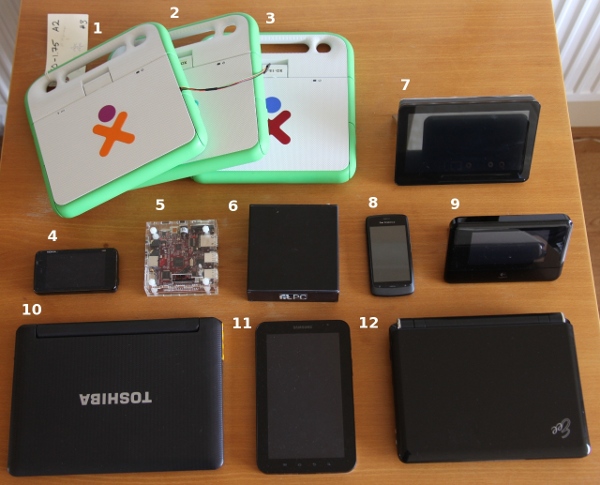So you’ve just received your shiny new OLPC XO 1.75 as part of the awesome Fedora Open Hardware Summer of fun! or you have an existing OLPC XO that you haven’t used for a while and it’s gathering dust. While it’s running Fedora it doesn’t seem to act completely like Fedora and what’s more it’s likely running an ancient Fedora 14 based release and that’s not really cool is it?
Well the first thing to do is to update it to a newer release. There’s XO releases based on both Fedora 17 (stable 12.1.0 release) and devel releases based on Fedora 18 (development 13.1.0 releases). For a XO-1.5 or XO-1.75 the update process is identical. The process I mention here re-images the machine so if there’s anything you need to save back it up first!
It’s relatively straight forward. You basically get the appropriate .zd file, put it on a USB key and away we go. The Fedora 18 based 13.1 images can be found here. You just need the latest .zd (and it’s good practice to grab the .zd.md5 file too) so for 13.1.0 os3 we’d download this file or for F-17 we’d use this one and pop it on a usb key. From there we make sure our XO has battery juice and is plugged into the power. We power it on and instantly hit ESC to get the OFW OK prompt. Plug in the usb key and run the command “fs-update u:\31003o2.zd“. The screen should change to a grid and slowly go all green. Once we’re back at the OK prompt we can type “reboot”. It will take a while to boot the first time as it will update the Open Firmware and do a few other bits but you should eventually be greeted with a Sugar prompt to enter your name. More detailed instructions including for the XO-1 can be found on the OLPC WIKI.
If you wish to move from the Sugar UX to the more familiar GNOME UX you can right click on the little man in the middle, select “My Settings” to get the Control Panel and there’s a icon “Switch to GNOME”. It will ask you to restart X. There’s a matching App in the GNOME menus to switch back.
Next up we want to unblock all updates from the Fedora repositories. The OLPC releases have a specific package NVR set for stability and release just selected updates rather than the usual firehose from Fedora. We generally want all updates available. The one exception to that at the moment is the kernel. So we do the following which removes the OLPC excludes and excludes just the kernel:
vi /etc/yum.repos.d/fedora*
delete this line
include=file:///etc/yum/olpc-exclude
add this line
exclude=kernel
Of course the first thing you want to do now is “yum update” to get the latest and greatest :-D!
Next up is enabling the standard GDM login. This is as simple as yum install gdm and then updating which display manager starts with the following:
rm /etc/systemd/system/display-manager.service
ln -s /usr/lib/systemd/system/gdm.service /etc/systemd/system/display-manager.service
reboot
Finally I suggest joining the Fedora OLPC mailing list. It’s a pretty quiet list but it’s where we copy any release announcements and also a spot to ask XO specific Fedora questions.
So that should get you to something a little more standard and allow you to install some of your favourite bits. Next up of course is getting more involved in both OLPC and ARM things happening in the Fedora community. I look forward to hearing about what works and what doesn’t on the Fedora planet and mailing lists 🙂
Also note that the above isn’t just restricted to the ARM based XO 1.75, even the original XO-1 runs Fedora 17 and 18 well so if you have an old XO lying around now is a good time to dust it off.
